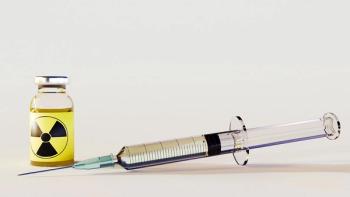
Pharmaceutical Technology Europe
- Pharmaceutical Technology Europe-09-01-2008
- Volume 20
- Issue 9
Effective complaint handling, investigations and adverse event reporting
The challenges of ineffective quality monitoring of complaints, investigations and adverse event reporting can lead to patient harm or death, product withdrawal, and negative financial and brand impact to the organization.
Regulatory bodies across the globe impose regulations and guidelines for manufacturers in the management, reporting and resolution of complaints, investigations and adverse events. However, many of these companies simply have not invested enough in quality staff, systems and procedures to ensure quality products and practices. This must change to better protect patients, manufacturers and investors. The best solution is better testing, higher quality manufacturing and a holistic quality management programme across the entire product development life cycle.
Flying Colours Ltd/Getty Images
Incident management challenges
Life sciences manufacturers introduce their products to their target market typically after approximately 15 years of research, development and testing. While the approval to market of the product is indication that the product is safe or medically necessary to a target population, negative incidents can occur related to the product itself, its formulation, labelling, delivery, packaging or a host of other reasons.
These complaints can come from call centres established to handle customer issues, the company's website or email, or through field service during visits by the vendor. The receipt of these adverse notifications is not where the problem lies: it is what happens to them next.
By law, manufacturers are required to have a quality management programme in place to handle and act on these issues, but many of these 'programmes' are disjointed and foster inconsistencies and information flow breakdowns. Without a centralized system and process, this critical information can be lost or mismanaged. This erroneous quality management can have serious implications to all the constituents involved.
A good quality management system...
If a centralized, automated and fully integrated quality management process and reporting system is not in place, challenges arise that put a serious strain on a company's quality management efforts. These challenges can lead to very serious consequences. The resulting challenges of ineffective quality monitoring of complaints, investigations and adverse event reporting, as well as decentralization of systems and procedures include:
- Poor data quality — inconsistent and incomplete reporting of adverse events, coupled with inadequate links to a company's corrective action (CAPA) system makes proper and accurate information sharing very difficult. This can lead to data inconsistencies and hinder all relevant departments from benefiting from the knowledge. It can also cause confusion over what is reportable as an adverse event and what is not.
- Inefficient response and reporting — slow and redundant workload can delay corrective and preventative action efforts, and stall closure of investigations.
- False findings — failure to properly investigate and determine the root cause of complaints or adverse events can result in false findings and lead to inadequate corrective or preventative action.
- Inadequate corrective and preventative action — ineffective utilization of data for trending and reporting to identify improvement areas.
These challenges can lead to patient harm or death, product withdrawal, and negative financial and brand impact to the organization.
Regulations
To curb this trend toward inconsistent and insufficient quality monitoring practices, regulators across the globe have published regulatory guidance and imposed regulations for quality management. The most pervasive of these is FDA's 45 Code of Federal Regulations Part 46, which ensures protection for human research subjects. Under this regulation, manufacturers in the life sciences field must report all "adverse events that are unanticipated problems and unanticipated problems that are not adverse events."1
For an event to be deemed an 'unanticipated' problem, it must be unexpected, related or possibly related to participation in the research, and must suggest that the research places subjects or others at a greater risk of harm than was previously known or recognized. If the event meets all three of these criteria then it is considered unanticipated and must be reported.
Other policies exist within each industry subset; for example, for the medical device industry, there is a medical device reporting (MDR) regulation that requires the filing of an MDR whenever an adverse event occurs for products undergoing remedial action. In the pharmaceutical industry, FDA mandates that each company must have a system for implementing corrective actions and preventive actions resulting from the investigation of complaints, product rejections, nonconformances, and so on. It also requires a structured approach to the investigation process with the objective of determining the root cause.2
The biologics industry also has regulations for quality monitoring. The Bioresearch Monitoring Programme was created to monitor all aspects of the conduct and reporting of FDA-regulated research. With these and a number of other regulations and guidance documents, it is easy to see how difficult it is to maintain quality management of products once they hit the market.
When violated, each of these regulations triggers a warning letter from the governing body to the manufacturer instructing them on how to become compliant with regard to the specific complaint or adverse event. Depending on the severity of these events and their ubiquity, these warning letters can initiate a lawsuit that requires product recall, postmarketing surveillance, further data research or a Phase IV trial.
In the ideal scenario, all of these warnings would be tied directly into the manufacturer's CAPA system, allowing the company to develop a corrective action plan that addresses the violations and prevents any future complaints or adverse events.
Solutions
Fortunately, there are comprehensive quality management systems available to automate all of these functions and requirements for manufacturers. These software programmes provide the organization with a centralized, consistent and standardized intelligent mechanism for recording, tracking and trending customer complaints, investigations and adverse event reporting according to regulatory standards. Many companies have been cited recently in warning letters for inconsistencies in their quality management procedures, as well as for failure to properly investigate complaints/adverse events. Companies have also been warned for:
- Deviant processes for deciding what is reportable as an adverse event and what is not.
- Late closure of investigations and submission of regulatory reports.
- Inadequate links to a CAPA system.
By implementing a web-based quality management system, organizations can avoid these problems, and improve overall data integrity and consistency, increase workflow efficiency and precision, keep patients safe and investors satisfied, and maintain a positive relationship with customers and the public at large. In short, these systems help life sciences manufacturers maintain credibility and stay away from any negative publicity as potential problems are caught and handled as soon as they are received.
A good system
There are many positive business outcomes from using an effective quality management system.
Compliance. The manufacturer must report the complaint or adverse event notification to the regulating bodies typically within 15–30 days (depending on event severity and type). Having a centralized, standardized and compliance-adhering system to help automate this process makes it far easier to remain compliant both externally and internally.
Safety. Quality lies at the core of product safety. Without quality, accurate and timely data, safety resolutions can lead to serious harm. An integrated quality management system ensures data integrity and consistency through secure entry, validation and integration with other systems, such as Enterprise Resource Planning and Electronic Data Exchange. This standardization enables timely and accurate complaint and adverse event assessments, structured root cause analyses, and appropriate corrective and preventative actions.
Workflow performance. The right quality management system can help ensure workflow efficiency, consistency and precision across the organization, eliminating the ad hoc reporting and tracking of complaints and adverse events. These items are immediately captured and put into a strict, preset and government-compliant system with clear SOPs. This ensures timely performance across the workflow life cycle; from complaint notification and assessment to investigation, regulatory reporting, root cause analysis, corrective action, preventative action and effectiveness check.
The law states that a quality management system is required for the handling of all these issues. It makes sense to arm yourself and your organization with the right tool that will ensure positive results for you, your organization, your patients and your investors.?
References
1. FDA Code of Federal Regulations — CFR 45 Part 46.
2. FDA Draft Guidance — Q10 Pharmaceutical Quality System, May 2007.
Matthew Kopecky is Manager, Solutions Architecture at Sparta Systems (NJ, USA).
Articles in this issue
about 17 years ago
Testing time for stem cellsabout 17 years ago
Back to schoolabout 17 years ago
Joining the parallel linesabout 17 years ago
Regulatory affairs: additional value?about 17 years ago
Bruce Daviesabout 17 years ago
Pseudo-polymorphic conversion by near-infrared spectroscopyabout 17 years ago
Renaissance manabout 17 years ago
The winner's circleabout 17 years ago
Bioanalysis of recombinant proteins by mass spectrometryabout 17 years ago
Modulation of drug release from hydrophilic matricesNewsletter
Get the essential updates shaping the future of pharma manufacturing and compliance—subscribe today to Pharmaceutical Technology and never miss a breakthrough.





